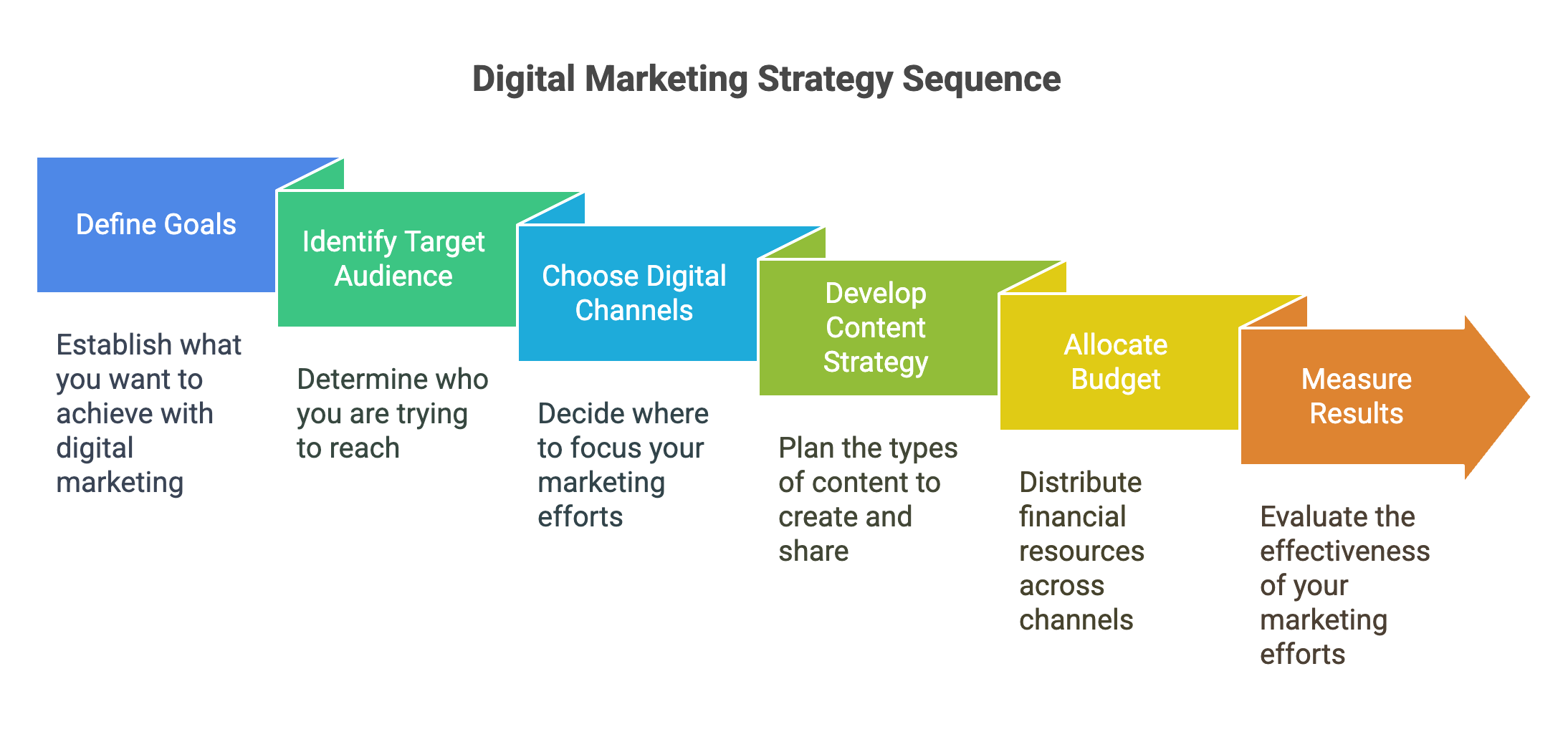Introduction to Digital Marketing Strategy
Introduction to Digital Marketing Strategy
A digital marketing strategy is like a roadmap for your online marketing efforts. It's a plan that outlines how you'll use digital channels like search engines, social media, email, and content marketing to achieve your specific marketing goals.
Think of it this way: you wouldn't set off on a road trip without a map, would you? Similarly, a digital marketing strategy helps you navigate the online world and reach your desired destination.
Why is a Digital Marketing Strategy Important?
- Provides Direction: It gives your efforts focus and ensures everyone on your team is working towards the same goals.
- Maximizes ROI: By identifying the most effective channels and tactics, you can allocate your budget wisely and get the most out of your investments.
- Enhances Brand Consistency: It helps you create a cohesive brand experience across all your digital touchpoints.
- Facilitates Measurement and Optimization: A clear strategy allows you to track your progress, measure results, and make data-driven adjustments.
Key Components of a Digital Marketing Strategy:
-
Define Your Goals:
What do you want to achieve with your digital marketing efforts? Examples:
- Increase brand awareness: Get more people to know about your brand.
- Generate leads: Capture contact information of potential customers.
- Drive website traffic: Attract more visitors to your website.
- Boost sales: Increase online or offline sales.
-
Identify Your Target Audience:
Who are you trying to reach?
- Demographics: Age, gender, location, income, education, etc.
- Psychographics: Interests, values, lifestyle, behaviors, etc.
- Online behavior: What websites do they visit? What social media platforms do they use?
-
Choose Your Digital Channels:
Where will you focus your efforts?
- Search engine optimization (SEO): Improve your website's visibility in search results.
- Content marketing: Create and share valuable content to attract and engage your audience.
- Social media marketing: Connect with your audience on social media platforms.
- Email marketing: Nurture leads and build relationships through email campaigns.
- Paid advertising: Use online ads to reach a wider audience.
-
Develop a Content Strategy:
What kind of content will you create and share?
- Blog posts: Share informative and engaging articles.
- Videos: Create visually appealing content that tells your brand's story.
- Infographics: Present data and information in a visually compelling way.
- Social media updates: Share engaging posts that encourage interaction.
-
Allocate Your Budget:
How much will you spend on each channel and tactic?
-
Measure Your Results:
Track your progress and adjust as needed.
Example:
Imagine a small online clothing store targeting young adults interested in sustainable fashion. Their digital marketing strategy might include:
- Goal: Increase online sales by 20% in the next quarter.
- Target audience: Young adults (18-35 years old) interested in eco-friendly clothing, ethical production, and minimalist style.
- Channels: Instagram, Pinterest, email marketing, and SEO.
- Content: High-quality photos of their clothing, blog posts about sustainable fashion, and behind-the-scenes looks at their ethical production process.
- Measurement: Track website traffic, sales conversions, and social media engagement.
By following a well-defined digital marketing strategy, businesses can effectively reach their target audience, achieve their marketing goals, and thrive in the competitive online landscape.

